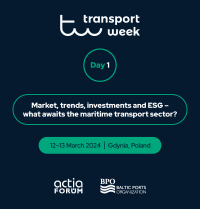Vessel operators pay close attention to their hull and machinery, but what if the ship could talk to them directly about its condition? That’s basically the goal of condition monitoring, or condition-based maintenance, which in effect “tell” the shipowner when and where repairs are needed.
At the most basic level, condition monitoring (CM) simply means tracking key indicators of equipment health and looking for changes that could predict trouble. Lube oil analysis is a time-tested example: Regular tests of an engine's oil are used to create a baseline for normal wear. When abnormal results come back from the lab, the operator knows something is wrong.
Over the last few decades, advances in computing and sensor technology have given rise to a more sophisticated method. In modern CM, digital sensors record a range of performance data such as temperatures, pressures, fluid flow rates and other metrics. All of this information gets analyzed by powerful algorithms, which search for patterns. The results are used to spot inefficient operating conditions, detect minor faults that could develop into future problems, or sound an alarm in the event of a serious issue.
A condition-monitoring program with prognostics can yield predictions about a system's future health. If the quality of the prediction is proven and class approves the application, the operator may be able to transition from traditional preventive maintenance (PM) to condition-based maintenance (CBM) for that system. The ultimate goal of CBM is to perform the right maintenance when the data says it is necessary, not just when the PM schedule says it should be done.
While the savings from CM and CBM can be significant – and well-proven in other industries – the sensors, installation services and data analysis software all come at a cost. Matching the right application with the right solution is the key to achieving a good return on investment.
Every Ship Is Different
Shipping has one obstacle to implementation that other industries do not: Every ship is different. "This is always the biggest challenge," says David Shannon, Business Development Manager for Caterpillar Marine's Asset Intelligence condition-monitoring service. "We don't have standardization, so every vessel faces a cost for getting the data off the ship and building analytic models for its systems."
Given the up-front expense, the typical user is in a high-value sector with a pressing need for reliability – for example, a cruise line – or a large operator who wants centralized monitoring. It takes consultation between the client and the vendor to arrive at a CM plan that makes business sense. "For our customers, the service starts out with the engines, generator sets, alternators, thrusters and other major equipment," says Shannon. "Once they become familiar with what we can do, they often want to monitor everything, but we advise them to focus on the most critical systems."
Such conversations can yield outstanding results. Shannon says that Cat Asset Intelligence customers can realize a four-fold return on investment – or better – through improved efficiency and avoiding breakdowns. As a monitoring service, Asset Intelligence shares health and performance indicators with the customer and with the local Cat dealer. For maintenance, its analytics tools make troubleshooting faster by narrowing the range of likely causes for a problem.
It also includes sophisticated prognostics tools to predict issues before they become serious, a capability that could open the door to true condition-based maintenance applications.
Shannon says that while Asset Intelligence is ready for CBM and every client talks about it, none are using the service as a replacement for preventive maintenance. In large part, this is because engine manufacturers' service programs are built around scheduled intervals, and the OEMs do not offer guidelines for making the switch. However, Asset Intelligence still gives a strong ROI by spotting problems early and supporting maintenance planning.
Engine Diagnostics
Condition monitoring is most often deployed for a ship's engines, the most valuable and mission-critical pieces of equipment on board. Cylinder pressure measurement is a longstanding CM method for large diesels and is commonly used for detecting load imbalances, blow-by, worn injectors and inefficient injection timing.
Traditionally, marine engineers used an analog indicator and manual record-keeping to perform cylinder pressure monitoring, but this method is giving way to electronic pressure sensors. Market leader CM Technologies (CMT) makes one of the most advanced models, the Premet X, a handheld device that can upload its measurements to DNV GL's ECO Insight cloud platform (or other cloud services) via a WiFi connection. The Premet X is useful for optimizing injection timing, which can reduce fuel consumption.
"The margins in shipping have been getting slimmer and slimmer, so a one or two percent reduction of fuel costs means quite a lot," says CMT Managing Director Matthias Winkler.
CMT also offers an advisory service to analyze pressure data and make recommendations, including prognostic advice that could be used for condition-based maintenance. As a practical matter, though, shipowners cannot do away with scheduled maintenance on engines if their vessel is to keep its classification – even if the data show that an engine is in good health. "[Class] has to be the driver to make changes here," Winkler says. "But I think that competition will drive all the classification societies in this direction, since CBM will save shipowners money.”
Finding Faults
While most CM solutions are focused on engines and high-value rotating equipment, ships have plenty of other systems on board, and one firm has found a way to make CM work for many of these lower-cost components.
Schneider Electric offers sensor-equipped electrical equipment that can be monitored remotely through its EcoStruxure program, which – according to Vice President for Marine & Shore Power Hervé Lours – can deliver big dividends without big capital investments. Since the sensors come pre-installed in Schneider's breakers, switchboards and other electrical components, EcoStruxure's startup cost for a newbuild is relatively low. It’s also a retrofit option for Schneider equipment on existing vessels.
As a condition-monitoring program, EcoStruxure tracks all the electric power and fluid data for water, steam and fuel. It can help catch a faulty configuration or developing problem before something goes wrong, but it’s also deployed for a true condition-based maintenance purpose. If the data for an electrical system shows all is well, a Schneider adviser can tell the shipowner that scheduled maintenance on that equipment can be postponed for, as an example, another six months. "This kind of thing makes the client very happy," says Lours.
Vendors of sensor-based CM systems often market their offerings for high-end applications on sophisticated vessels. However, Lours says he has found surprisingly strong demand for EcoStruxure among the operators of everyday bulkers and tankers. Thanks to its low upfront cost, the service is attractive for working vessels with thin margins and stiff competition. "It is precisely because these ships make a low margin that they invest in this technology,” Lours says, “because it’s a good way to improve that margin. It's very successful."
EcoStruxure’s technology is directly adapted from Schneider's systems for shoreside industries, where CBM has greater acceptance. Lours predicts broader uptake in the maritime industry over time and suggests this is already happening in Asia, where shipowner interest in CBM is accelerating. "We are just at the beginning," he notes.
Vibration Analysis
Vibration analysis is another commonly deployed technique for diagnosing equipment condition. Engine bearings, electric motors, propellers and other components create identifiable vibrations. When they begin to fail, the source of the failure can often be diagnosed by changes in vibration.
The technology behind vibration analysis has been around for decades but has grown more automated and sophisticated in recent years. Digital vibration sensors can now be installed as a permanently mounted system, complete with analytics software. But in the maritime industry the analysis is usually conducted using handheld monitoring tools.
With a class society's approval, vibration analysis can be combined with other monitoring techniques to obtain a waiver from open-and-inspect requirements for pumps, compressors and other shipboard equipment. According to Rich Merhige, President of Fort Lauderdale-based Advanced Mechanical Enterprises (AME), class likes to see a vibration specialist inspect the equipment under this kind of CBM program at least once a year. It can cost $6,000-$8,000 for the specialist's visit to the ship, but it avoids the time, expense and risk of tearing down the machine for an internal inspection.
If the crew could collect the vibration data themselves, it would save the shipowner even more. AME now promotes a portable vibration sensor that is designed to be used by anyone, including engineering crewmembers. After it is set up, the crew can make a round of the engine room once a quarter and send the data back to a qualified technician on shore. Merhige sees this as the way of the future – low startup costs, more frequent readings, no need to fly a specialist out to the ship, and early detection of developing problems.
"Downtime is extremely expensive, and maximizing your assets and your equipment is very important to being competitive," says Merhige. "Nobody wants to hire a company whose ship is breaking down all the time." – MarEx
Paul Benecki is the magazine’s Americas/Europe Editor.
The opinions expressed herein are the author's and not necessarily those of The Maritime Executive.
The Maritime Executive










